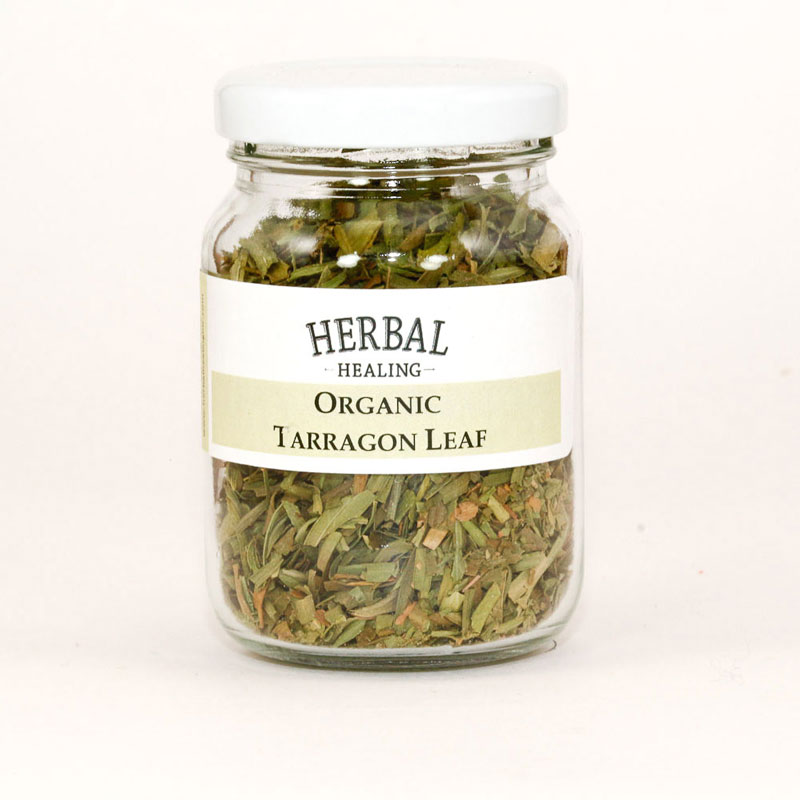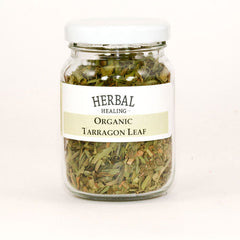

Organic Tarragon Leaf
- $10.95 CAD
- $10.95 CAD
- Unit price
- per
10 g Certified Organic Tarragon Leaf
Couldn't load pickup availability
Product Information
Tarragon’s (Artemisia dracunculus) name is derived from the French esdragon, meaning “little dragon.” The dragon-like roots may strangle the plant if it is not divided often. In medicinal lore and legend, any plant with a serpentine root system is given credit for treating snakebite, and tarragon is no exception.
Health Values
Although chiefly a culinary herb, tarragon has been used to stimulate the appetite, relieve flatulence and colic, and cure rheumatism. There appears to be no scientific basis for any of these practices, but tarragon can protect foodstuffs as an antioxidant. It may be useful as an anti-fungal as well. It was once believed that tarragon leaf could cure insect stings and snakebites, as well as the bites of rabid dogs. A tea made with tarragon and chamomile has been used to induce sleep. Tarragon is also a mild diuretic. The herb was used in Ancient Greece to relieve toothache as a sort of local anesthetic, which makes sense due to its containing eugenol, a natural anesthetic.
Suggested Uses
Tarragon complements fish and shellfish, chicken, turkey, game and veal and most egg dishes. The chopped leaves (or rehydrated dry ones) are attractive and tasty in mayonnaise, melted butter sauce and French dressing. Tarragon enhances fish, shellfish, pork, beef, lamb, game, poultry, pâtés, leeks, potatoes, tomatoes, carrots, onions, artichokes, asparagus, mushrooms, cauliflower, broccoli, beets, peas, parsley, chervil, garlic, chives, lemons, oranges, rice, and barley. Use it in flavoured vinegars, herbed mayonnaise, herbed butters, cream sauces, and soups, and with cheeses, eggs, sour cream, and yogurt. For maximum flavour, add tarragon to long-cooking soups and stews during the last 15 minutes only.
Ingredients
Tarragon Leaf.
Taste and Aroma
Aromatic, bittersweet, powerful and fresh with a hint of licorice flavour.
10 g Certified Organic Tarragon Leaf
RELATED PRODUCTS
- Choosing a selection results in a full page refresh.


